by Nancy Olson
It’s simple, really. An automatic watch’s oscillating weight, or rotor, is what winds it up. It does so using the motion of one’s wrist, which actuates the rotor. Which itself is weighted to easily move when the arm moves.
The movement of the rotor is what winds the mainspring.
Perpetually, automatically.
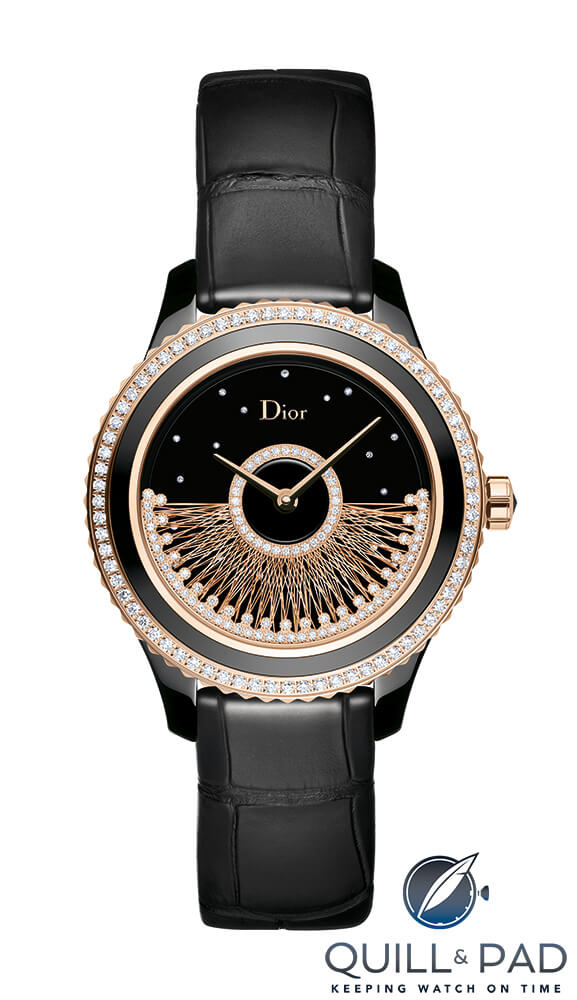
Dior VIII Grand Bal Fil d’Or in black ceramic; the visible dial-side rotor is woven with gold thread
In the case of many automatic watches, the rotor’s activity is clearly visible via a see-through case back. But with Dior’s Inversé 11½ or Inversé 8¼ calibers, which are produced by Les Ateliers Horlogers Dior in cooperation with Swiss movement manufacturer Soprod, the rotors were designed to appear on the dial side of the watch (inversé means “opposite” in French).
And in the case of the Dior VIII Grand Bal, this essentially functional component is transformed into a gorgeously decorated focal point of the dial.
Christian Dior’s ball
The derivation of the name “Dior VIII Grand Bal” offers an interesting bit of insight into Dior’s history. Christian Dior’s favorite number was eight, since it was a recurring numeral that bode well throughout his life. In his memoirs he says that he founded his workshops in the eighth district of Paris on October 8, 1946, “a new eight-floor building…” and he named his first collection “En Huit.”
Stretching the lore a bit further, the number is a semblance of his revolutionary fashion silhouette, “clean and curved, emphasized bosom, hollowed waist, accentuated hips.”
The “Grand Bal” portion of the collection’s name refers to the rotor’s sway, which is said to conjure the movement of a woman’s gown at a “grand ball.” There have been numerous iterations of the Dior VIII Grand Bal since its debut in 2011, featuring varying materials and diamond treatments.
But it is still the dial-side oscillating weight that takes center stage with such accouterments as feathers, mother-of-pearl, gemstones, and for this year, golden thread (Grand Bal Fil d’Or) that underscore the company’s inextricable roots in haute couture.
And as was reiterated during my visit to Les Ateliers Horlogers Dior in La Chaux-de-Fonds a couple of years ago, the design of these watches is as much about math as it is about fantasy, since the weight of the various decorations changes the effect of gravity on the rotor.
Grand Bal Fil d’Or
As the 2015 star of the show, the Dior VIII Grand Bal Fil d’Or showcases the art of weaving, with the oscillating weight decoration hand-woven by a lace maker from Le Puy, a city in France renowned for its lace since the sixteenth century. The 38 mm pink gold and black ceramic watch’s rotor is in pink gold and set with diamonds.
In addition to the new Cancan, Plissé Soleil, and Resillé models, several truly gorgeous, one-of-a-kind jewelry pieces are being introduced to the collection, including one particularly exotic watch called Envol, which uses scarab beetle elytra (the hard forewing) to create marquetry on the dial.
I’m not sure if the creatures willingly gave up their lives for the cause, but the timepiece combines white and yellow gold, tsavorite garnets, and diamonds – all set off by hand-painted fluorescent pink hands and a metallic green strap.
Sound unconventional? It is, and I like it.
Quick Facts Dior VIII Grand Bal Fil d’Or
Case: 38 mm, pink gold and black ceramic
Movement: automatic Caliber Dior Inversé 11 ½ (Soprod base) with rotor on the front of the watch; rotor woven with gold thread and set with diamonds
Functions: hours, minutes
Limitation: 88 pieces
Price: approximately $40,000

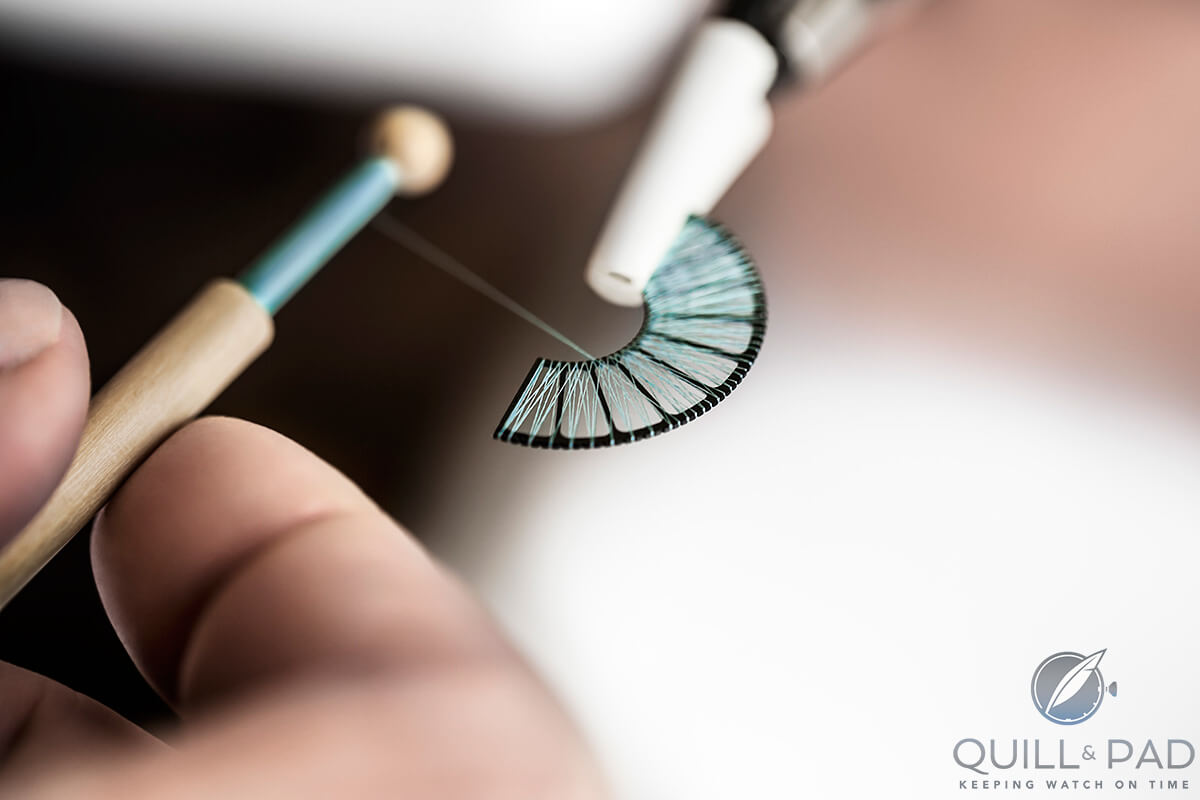
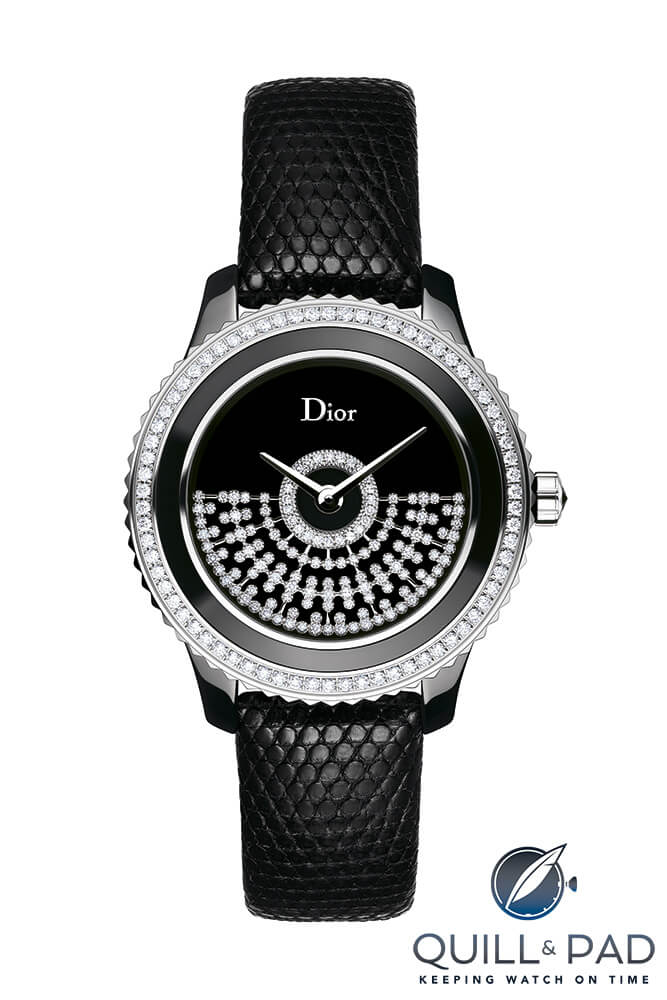
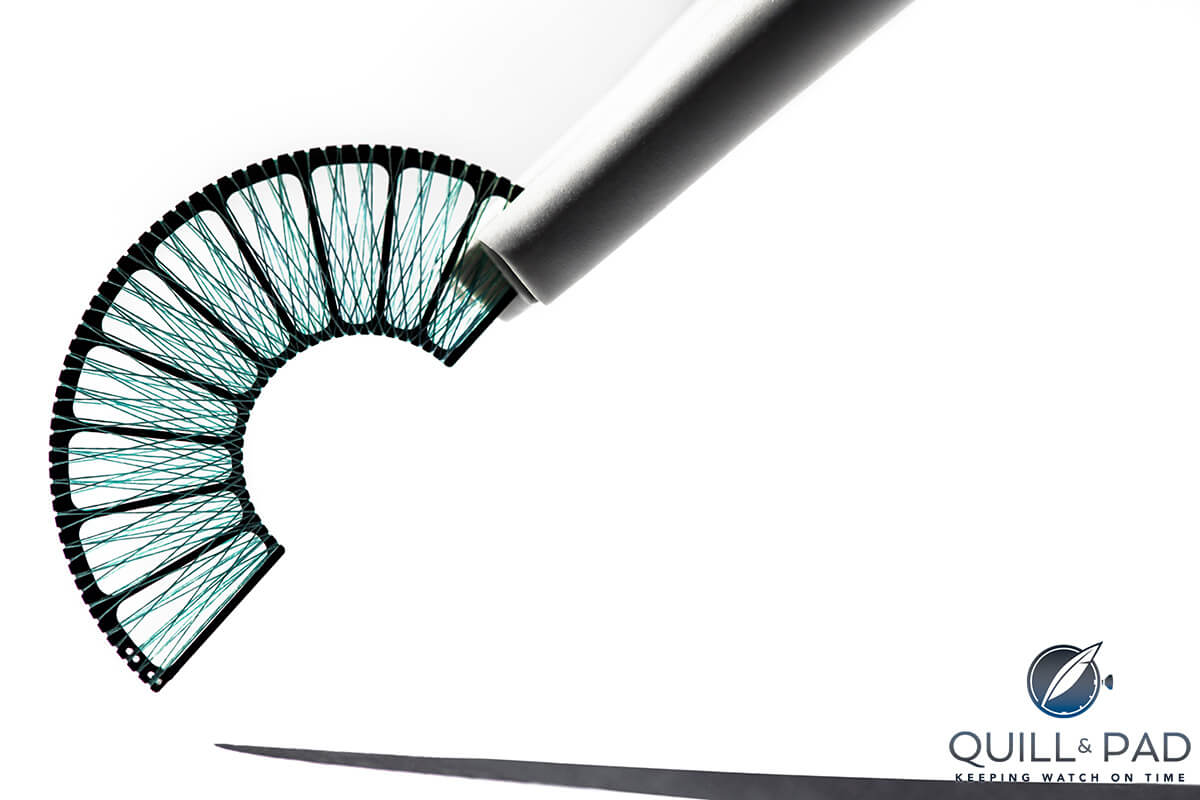
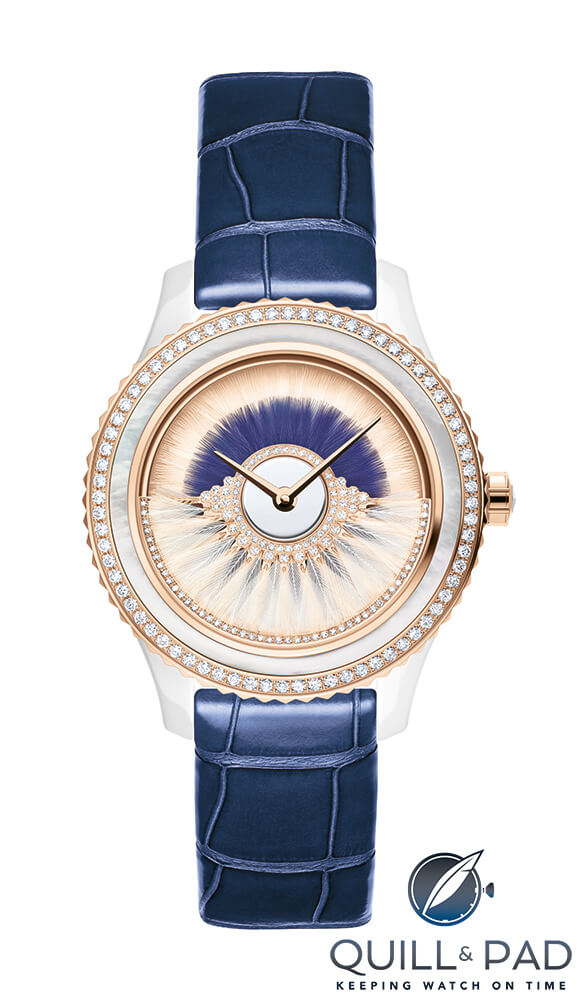
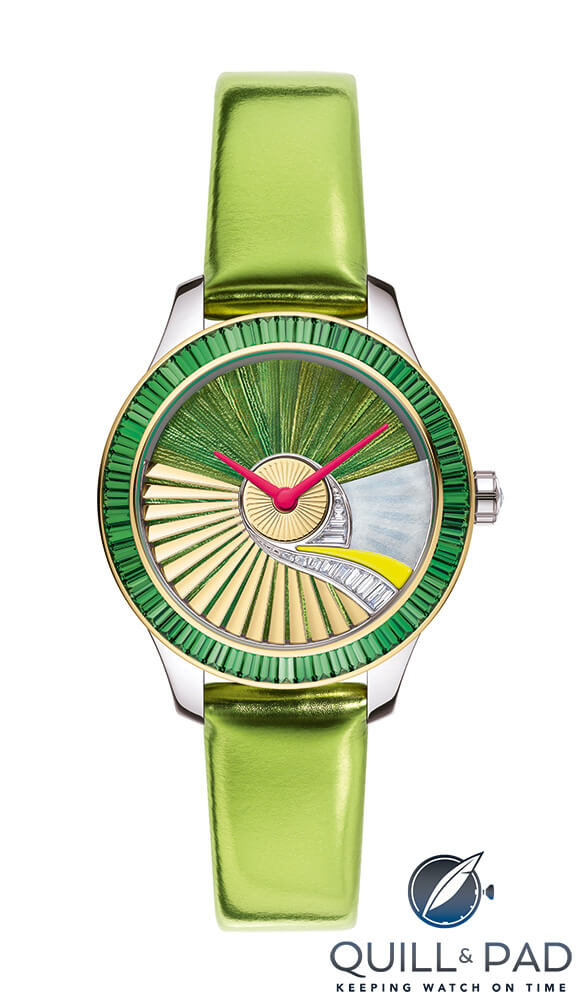
Trackbacks & Pingbacks
[…] Meanwhile, marquetry specialist Agnès Paul-Depasse prepares her scarab beetle elytra fragments. To my knowledge, she is the only artist currently working with this material, and she also created the dial for the Dior Envol Grand Bal VIII (see Dior’s 2015 Grand Bal VIII With Dial-Side Rotor And Scarab Beetle Elytra). […]
Leave a Reply
Want to join the discussion?Feel free to contribute!